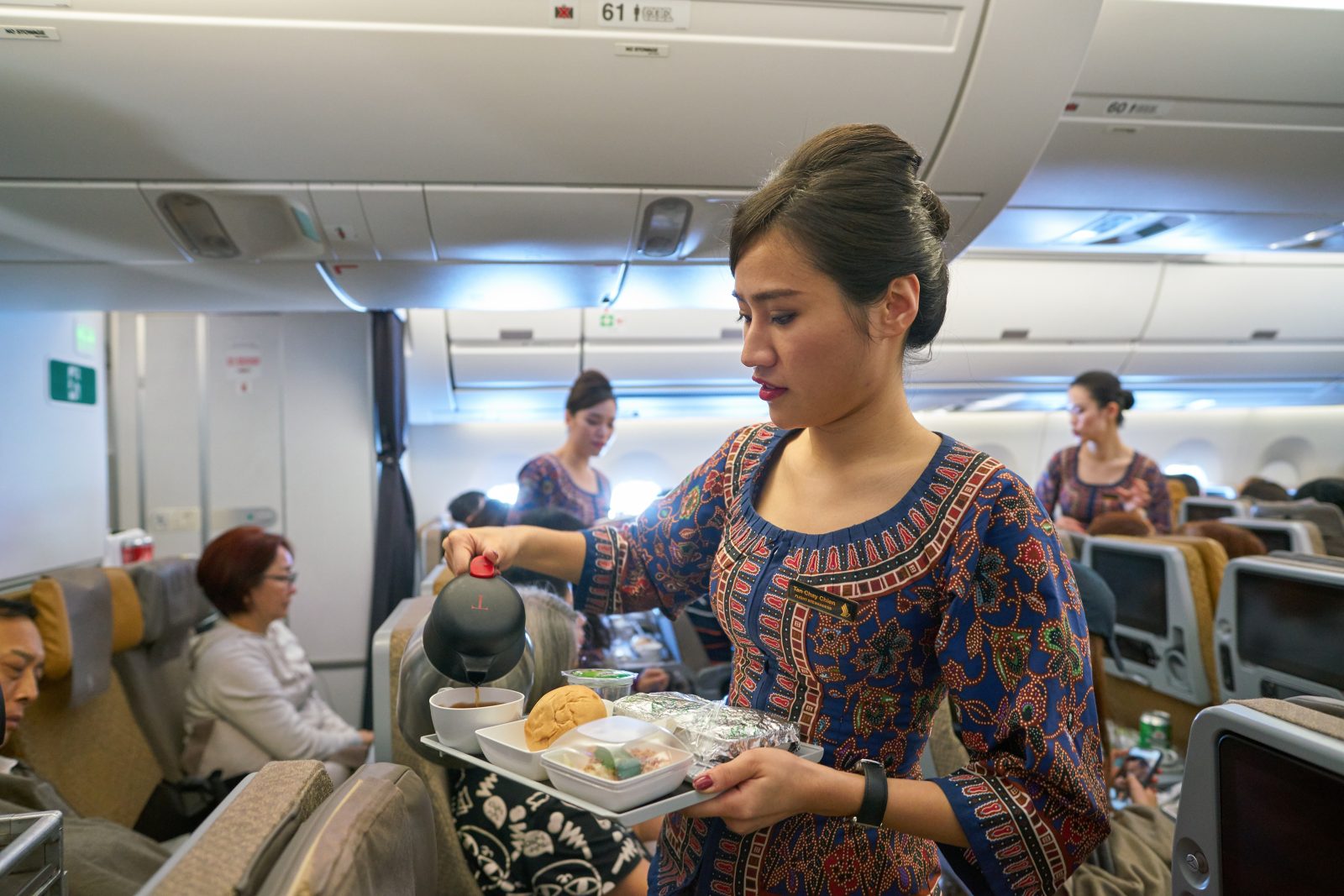
A leading women rights and gender quality organisation says the iconic sarong Kebaya uniform worn by female flight attendants at Singapore Airlines since the 1970s has “distinctly fetishistic, Orientalist undertones” and has urged the airline to become more “diverse and inclusive”.
The sarong Kebaya uniform was originally designed by Parisian couturier Pierre Balmain in 1968, and the colourful batik motif design has become a cornerstone of the Singapore Airlines brand ever since.
During the same period that Balmain unveiled his uniform design for Singapore Airlines, the ‘Singapore Girl’ – the image of a young and single female flight attendant – was born as a key marketing strategy for the airline.
The Singapore Girl image has endured through the decades and even as recently as 2019, the airline said that the Singapore Girl and “her gentle, caring ways” were still relevant in the way that Singapore Airlines portrayed itself to the world.
“The airline industry has a history of sexist practices that objectify women while putting up barriers to their being able to earn a living,” said Singapore’s Association of Women for Action and Research (AWARE) on Saturday.
“The image of the ‘Singapore Girl’—a cornerstone of SIA’s branding—has long been criticised… the fantasy of a beautiful, kebaya-clad woman serving a (presumably male) passenger’s every whim having distinctly fetishistic, Orientalist undertones,” the highly-respected charity group continued in a series of tweets.
The advocacy group spoke out just days after Singapore Airlines confirmed it would no longer sack female flight attendants who got pregnant. Until July, pregnant flight attendants were dismissed with just two months worth of wages, but in a landmark policy shift, expectant mothers will now be offered ground positions before returning to the skies after the birth of their child.
AWARE slammed the airline’s old policy as “discriminatory and sexist” and said it was surprised it had taken so long for the practice to end.
But the charity warned that “while most airlines have by now scaled back on overtly discriminatory practices, the sexism that underpinned those rules pervades in other ways”.
AWARE cited strict appearance and uniform rules as one way that sexism within the aviation industry persists. At Singapore Airlines, female flight attendants are ‘assigned’ one of several approved hairstyles that are chosen for them when they join the airline.
They must continue to wear this style for the remainder of their career.
The group also called out other “extreme” appearance standards like mandatory weight checks that still persist at a number of leading international airlines, as well as workplace sexual harassment.
In January, a 50-year-old senior flight attendant at Singapore Airlines was convicted of outraging the modesty of a junior female colleague by smacking her on the right buttock during a flight between Singapore and the Philipines in 2019.
Related
Mateusz Maszczynski honed his skills as an international flight attendant at the most prominent airline in the Middle East and has been flying ever since... most recently for a well known European airline. Matt is passionate about the aviation industry and has become an expert in passenger experience and human-centric stories. Always keeping an ear close to the ground, Matt's industry insights, analysis and news coverage is frequently relied upon by some of the biggest names in journalism.








Seems to me if someone doesn’t like the uniform, they don’t have to choose to work there.
Exactly. What ever happened to free market enterprise driving decisions instead of woke nonsense?
One of the best airlines, if not the best. Don’t fix what is not broken. Figure out why US airlines are the worst: inconsistent service – on the ground & in-flight. Fix them before you even think about SIN!
Bravo! I, too, believe that the bigger problems exist in western carriers. SIA is doing just fine without these foreign meddlers who complain without any skin in the game.
To satisfy that political organization complaining, all flight attendants should wear green jumpsuits with patches, like the flight attendants on New Zealand air force planes going to Antarctica.
How about some flight attendants in the US who wanted the right to combine uniforms, like wearing high heels with a men’s suit or having a beard and wearing a dress?